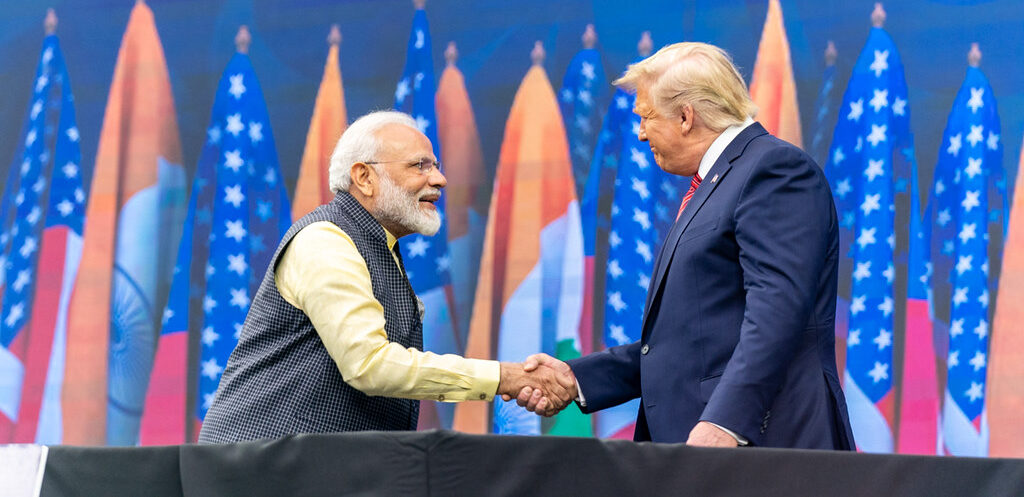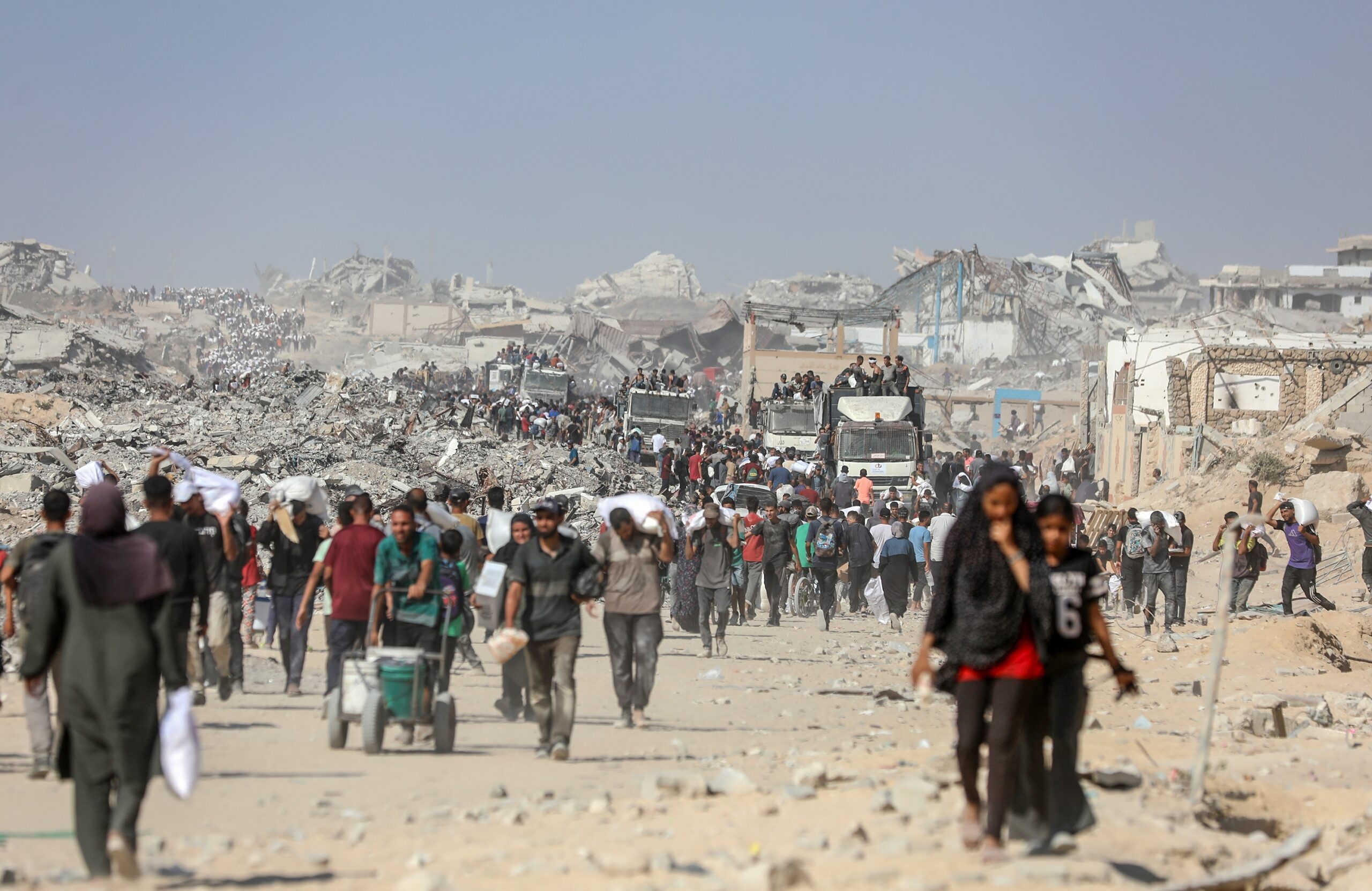On 27 August 2025, the United States imposed a sweeping 50% tariff—25% as tax and 25% as penalty—on $87.3 billion worth of Indian imports, excluding pharmaceuticals, electronics, and smartphones. The U.S. Department of Homeland Security justified the move because India was directly or indirectly importing Russian Federation oil and gas.
That in turn poses threats to the United States by the government of the Russian Federation. Going a step further, White House spokeswoman Karoline Leavitt labelled the tariffs as sanctions.
The economic impact of the sanctions appear to be insignificant for India. Analysts estimate India’s GDP may be impacted between 0.2% and 1%, equivalent to $7–$25 billion. New Delhi has downplayed the shock. Exports to the U.S. account for only 2–2.5% of GDP, and strong domestic consumption provides a buffer. Evaluating the net impact and addressing the sensitivities of the local constituency, Prime Minister Narendra Modi vowed not to yield to Washington’s pressure, promising instead to shield India’s agricultural, dairy, and fishery sectors, and he was prepared to pay a heavy price for it. To alleviate this economic coercion, India is quietly identifying alternatives to diversifying its exports.
A Long Courtship Strained
The tariffs mark a sharp turn in a relationship that has deepened over the past two decades. India and the U.S. have invested heavily in building their partnership, motivated largely by the rise of China and the shifting balance of power in the Indo-Pacific. To strengthen the partnership, New Delhi joined the Quadrilateral Security Dialogue (the Quad), increased military exercises with Washington, and enhanced intelligence-sharing. Notwithstanding its closeness to the U.S. and coordination strategy regarding China, India retained its principle of strategic autonomy. This balancing act has been most visible in New Delhi’s ties with Beijing and Moscow. Despite border a conflict with China, bilateral trade reached $127.7 billion in 2024–25. While much of the West cut off ties with Russia, India has continued to import Russian oil and weapons, unwilling to sacrifice its energy imports and long-standing defence cooperation. For New Delhi, the priority is to keep options open: engage the U.S. where interests align, but not to “burn bridges” with either China or Russia.
A Summit in Tianjin
It is against this backdrop that President Vladimir Putin, fresh from a summit with President Donald Trump in Alaska, will meet President Xi Jinping and Prime Minister Modi at the Shanghai Cooperation Organization (SCO) leaders’ summit in Tianjin from 31 August to 1 September 2025. With Washington attempting to squeeze Russia’s major partners, India and China have become critical to Moscow’s survival. Both have resisted U.S. pressure, and the Tianjin summit could be pivotal in shaping their trilateral response.
The gathering also comes amid rising U.S. hostility toward BRICS (Brazil, Russia, India, China, and South Africa), which Trump has described as anti-American. Washington is even weighing an additional 10% tariff on BRICS members, further fuelling resentment.
What Each Leader Wants
At the SCO table, each leader will arrive with clear objectives. Putin will aim to reassure Modi that Russia can provide uninterrupted defence supplies, spare parts, and energy despite Western sanctions. For Moscow, maintaining Indian demand is vital for both its economy and geopolitical leverage.
Xi may attempt a charm offensive. China could ease tensions at the disputed border, rebalance bilateral trade to some extent, and offer India a greater role in regional initiatives. For Beijing, drawing India away from Washington’s orbit would be a strategic coup.
Modi’s task will be complicated. India wants to project itself as a confident rising power—on the threshold of becoming the world’s third-largest economy after the U.S. and China—while maintaining its strategic autonomy. New Delhi understands that Moscow seeks markets, Beijing seeks leverage, and Washington seeks alignment against China. But India seeks something different: manoeuvring space.
Multi-Alignment, Not Hedging
For decades, India has resisted being slotted into rigid alliances. While the U.S. and China often try to hyphenate India with Pakistan to checkmate New Delhi’s influence in its sphere of influence. Against it, New Delhi supports multi-alignment. This approach gives it more strategic flexibility than either siding fully with Washington or drifting toward Beijing and Moscow.
The IMF projects sustained growth at 6.4% in 2025, with the World Bank at 6.3%. New Delhi is also diversifying its trade through new free trade agreements with the UK and Australia, as well as expediting ongoing negotiations with the EU, New Zealand, and Peru. While exploring new trade avenues, India will maintain close defence and energy ties with Russia, cautiously manage its border conflict with China, and keep lines open with Washington.
Looking Ahead
The Putin–Xi–Modi summit may not deliver dramatic announcements, but it will reflect the subtler reordering of global politics: one shaped less by permanent alliances and more by pragmatic, interest-based alignments. In this fluid landscape, India’s steady insistence on strategic autonomy provides both resilience against shocks and leverage in shaping the emerging order.
Still, the coming months will be critical. The Russia–Ukraine war may conclude within six months or so, leading to a lifting of sanctions on Moscow. If so, Russia will recalibrate its external partnerships to spur economic growth. Meanwhile, Trump is expected to visit China in the next three months. The outcome of that meeting could reshape Beijing’s policy posture toward India. By contrast, a Trump visit to India appears unlikely, even if a Quad summit takes place in New Delhi.
Time and Leverage
This timeline gives India valuable breathing space. Through the end of 2025, New Delhi can watch how Washington, Beijing, and Moscow adjust their strategies before making irreversible choices. Rather than strategic hedging or retaliation, India may offer limited concessions to U.S. exporters while maintaining its defence and energy imports from Russia, and press China for border resolution and trade balance. Simultaneously, it can deepen trade agreements with the UK, Australia, and Chile, revive negotiations with the EU and Oman, and strengthen ties with fellow BRICS states, such as Brazil and South Africa.
In essence, India has both time and leverage. By manoeuvring carefully, it can cushion the impact of U.S. trade sanctions, navigate the evolving strategies of China and Russia, and demonstrate its standing as a global economic powerhouse. The message is clear: India is not merely a swing state in the competition among great powers. It is a power in its own right—one that intends to maintain strategic autonomy and shape a multi-aligned world order on its own terms.
Dr Dalbir Ahlawat is a Senior Lecturer in Security Studies, School of International Studies, Macquarie University, Australia.
This article is published under a Creative Commons License and can be republished with attribution.





